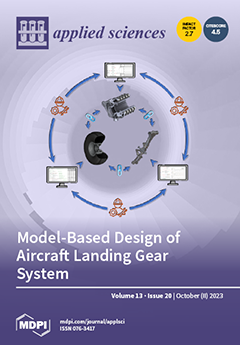The study of deep soil mechanics is the basis of deep shaft construction. Exploring the nonlinear permeability mechanism of deep confined aquifers in depth is the prerequisite and foundation for carrying out calculations of the hydrophobic consolidation settlement of thick alluviums and preventing and controlling deep-well-damage disasters. Against the background of shaft damage caused by hydrophobic consolidation settlement of the bottom aquifer of thick alluviums, a joint HPLTC-HPPNP (high-pressure long-term consolidation and high-pore-pressure nonlinear permeability) test was carried out on the bottom aquifer of thick alluviums based on the ETAS test system. This paper studied the evolution law of the permeability coefficient (
) of bottom aquifers under different heads of confined water, confining pressures (
), permeability hydraulic gradients (
i) and loading–unloading methods. The internal pore structure characteristics of clayey sand were obtained by using low-field nuclear magnetic resonance (NMR) technology to explore the clayey sand’s nonlinear permeability micro-mechanism. The research results showed that the bottom aquifer seepage volume (
) under high stress is affected by the head pressure difference and pore water dissipation, and
decreases with an increasing
according to the power function relationship. The influence of the hydraulic gradient (
) on
is significantly influenced by
. When
< 4 MPa,
decreased with an increasing
, and when
> 4 MPa,
increased with an increasing
first, then decreased, before then tending to be stable. Under different stress states, the
T2 spectrum of clayey sand showed a bispectrum peak type, and the adsorbed water content decreased linearly with an increasing
, while the capillary water decreased according to the power function. The content of capillary water in the permeable pores plays a key role in the permeability of clayey sand, and it has a power function relationship with
. The research results of this paper provide a good experimental method for the study of deep soil permeability characteristics and parameter determination, provide a theoretical basis for deep alluvial hydrophobic consolidation and settlement, and further make up for the shortcomings of existing deep soil mechanics in permeability characteristics.
Full article





